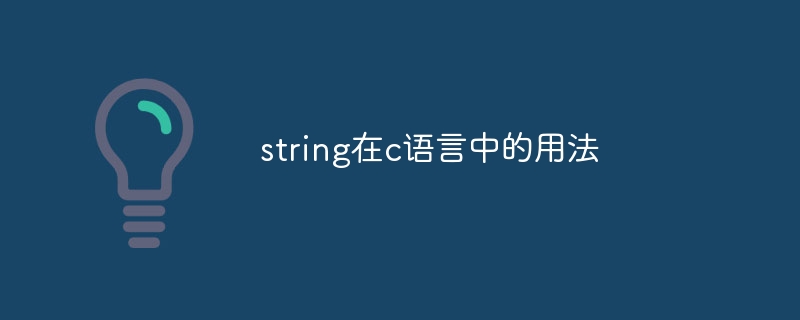Home >Backend Development >C#.Net Tutorial >How to use string in c language
How to use string in c language
- 下次还敢Original
- 2024-04-27 22:42:16589browse
In C language, string ends with '\0', which is used to store and process strings. Specific usages include: declare string: char string_name[size]; initialize string: char string_name[] = "content"; access element: string_name[index]; obtain length: strlen(string_name); compare string: strcmp(string1, string2) ;String function: strlen() returns length, strcmp() compares, strcpy() copies, strcat() appends.

Usage of string in C language
string is used to store and process strings in C language Character array. It is terminated with '\0' (null character) to indicate the end of the string.
Usage of string
-
Declare string:
<code class="C">char string_name[size];</code>
-
Initialize string:
<code class="C">char string_name[] = "Hello World";</code>
-
Access string element:
<code class="C">string_name[index];</code>
-
##Get the string length :
<code class="C">strlen(string_name);</code>
-
Compare strings:
<code class="C">strcmp(string1, string2);</code>
string function
C language provides the following string functions:- strlen(): Returns the string length.
- strcmp(): Compares two strings and returns 0 for equality, otherwise a non-zero value is returned.
- strcpy(): Copy one string to another string.
- strcat(): Appends one string to another string.
string example
<code class="C">#include <stdio.h>
int main() {
char string1[] = "Hello";
char string2[] = "World";
printf("%s\n", string1); // 输出:Hello
printf("%d\n", strlen(string1)); // 输出:5
strcpy(string2, string1); // 将string1复制到string2
printf("%s\n", string2); // 输出:Hello
strcat(string2, "!"); // 将"!"附加到string2
printf("%s\n", string2); // 输出:Hello!
return 0;
}</code>The above is the detailed content of How to use string in c language. For more information, please follow other related articles on the PHP Chinese website!

